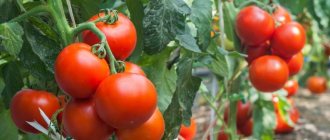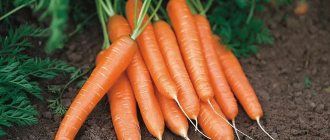Some picky plants can develop safely surrounded by any green “brethren”. But not all cultures are so indiscriminate in their choice of neighbors. Let's find out what is best to plant with so that the plants do not oppress each other.
A classic example of mixed planting has been known for a long time: the American Indians planted corn, beans and squash together. The latter, with its large leaves, created shade, preventing the scorching sun from destroying the plants, and restrained the growth of weeds. Thanks to its tall stem and narrow but quite numerous leaves, corn protected the pumpkin from overheating, and beans, being good green manure, enriched the soil with nitrogen. And this is not the only example of such an ideal garden community.
Eggplant
This crop is best planted among bush beans, which repel the Colorado potato beetle and thereby protect the little blue ones. Eggplants also grow well next to thyme and peas. Possibly adjacent to potatoes, peppers and spinach.
But being next to cucumbers, tomatoes and potatoes is not the best option. Such “relationships” reduce the quality and quantity of the harvest.
According to some summer residents, eggplants should not be planted next to cucumbers and pumpkins. But opinions differ about the proximity of eggplants and tomatoes.
Beans
Beans grow well in the vicinity of many crops: cucumbers, tomatoes, sweet corn, radishes, radishes, spinach, mustard. They are also compatible with potatoes, but in this case you need to know one thing: beans should be planted only along the edge of the potato field, because they absorb large amounts of nutrients. Otherwise, the potato tubers will not receive enough necessary elements (in particular, potassium) and will grow small.
There are also useful herbs for beans that improve the development of the plant. These are basil, borage, lavender, oregano, rosemary, yarrow.
However, beans should not be planted with any types of onions, garlic, peas, marigolds and wormwood.
Cabbage (white cabbage and broccoli)
Crops such as bush beans and celery have a beneficial effect on cabbage. The latter, for example, protects cabbage from flea beetles.
Cabbage and celery make great neighbors
Also, white cabbage and broccoli get along well with peas, cucumbers, carrots, spinach, tomatoes, beets, and chicory. Dill has a positive effect: planted between rows, it improves the taste of cabbage and repels aphids and caterpillars. And aromatic herbs save this crop from cabbage butterflies: thyme, sage, rosemary, mint, chamomile.
Cabbage does not go well with crops such as parsley, garlic, grapes, turnips and tansy.
Neighborhood of vegetables in the beds: compatibility table
For the correct combination of plants in the garden, a detailed table of compatibility of plants in the garden has been compiled. It clearly shows which plants and garden crops go well together, which neighbors in the beds are undesirable, and what to plant with what to get a good harvest.
| Name of culture | Favorable neighbors | Unwanted neighbors |
| Watermelon | Beans, potatoes, oats | |
| Basil | Sweet peppers, peas, all types of cabbage, tomatoes, eggplants, asparagus | Cucumber, rue |
| Eggplant | Peppers, bush beans, onions, spinach, lettuce, peas, thyme, basil | Fennel, cucumber, pumpkin |
| Vegetable beans | Excellent compatibility of these plants in the garden - with any cabbage, carrots, radishes, cucumbers, beets, potatoes, pumpkin, zucchini | Fennel, peas, onions, garlic, marigolds |
| Peas | Basil, kohlrabi, lettuce, eggplant, legumes, carrots, turnips, cucumber, radish, radish, parsley, zucchini, pumpkin, watermelon | Hyssop, wormwood, rhubarb, tomato, onion, garlic |
| Mustard | Suitable neighbors in the garden - any cabbage, radish, legumes, peas, spinach | Poor compatibility with plants such as beets, rapeseed, turnips |
| Melon | Corn, radish, radish, beans | Potatoes, cucumbers |
| Zucchini | Onions, corn, beets, legumes, bush beans, mint, radishes, nasturtium | Potatoes, pumpkin |
| White cabbage | This cabbage is a good neighbor in the garden for radishes, beets, potatoes, lettuce, cucumber, celery, onions, dill, beans | Carrots, tomatoes, turnips, garlic, parsley, tansy, cauliflower |
| Broccoli | Parsley, beans, potatoes, onions, beets, lettuce, carrots, celery, dill, chamomile | Tomato, turnip |
| Brussels sprouts | Favorable proximity to vegetables such as potatoes, beans, dill, celery | Strawberries, tomatoes |
| Kohlrabi | Cucumber, lettuce, radishes, onions, beets, spinach, peas, dill, potatoes, peppers | The proximity of such garden crops as tomatoes, beans, strawberries, horseradish, garlic is undesirable |
| Cabbage | The plant’s proximity to the garden bed with potatoes and sage would be excellent. | Tansy |
| Cabbage | Peas, beans, spinach, lettuce, carrots, mustard, sage | Strawberry, tomato |
| Cauliflower | Lettuce, cucumber, celery, potatoes, beans | Tomato, strawberry, beet, broccoli |
| Potato | Onions, cabbage, corn, horseradish, garlic, beans, radishes, eggplant, radish, legumes, spinach, lettuce, horseradish, beets, watermelon, amaranth | The proximity of such vegetables as fennel, pumpkin, tomato, cucumber, melon, celery, zucchini, rhubarb is unfavorable |
| Watercress | Radish, radish, turnip, onion, nasturtium, spinach, tomato | The only unwanted vegetables in the garden are cucumbers. |
| Corn | Potatoes, lettuce, beans, beans, zucchini, pumpkin, cucumber, peas, watermelon, artichoke, melon, tomato, soybeans | Fennel, onion, beets, celery |
| Bulb onions | Onions and cabbage get along best in the same bed. Also good neighbors for onions in the garden bed are carrots, cucumbers, beets, tomatoes, zucchini, watermelon, melon, peppers, potatoes, dill, parsley | Sage, beans, beans, radishes, radishes, peas, turnips, asparagus |
| Leek | The correct neighborhood for leeks will include plants such as celery, parsley, carrots, cabbage, lettuce, beets, and beans. | Undesirable – beans, broccoli, peas |
| Carrot | Good compatibility of plantings in the garden - with cucumbers, onions, radishes, peas, sage, radishes, spinach, lettuce, garlic | Carrots do not like to be next to beets, anise, parsley, fennel, dill, and celery in the garden. |
| Cucumber | The best vegetable neighbors for cucumbers are corn, late white cabbage, carrots, onions, garlic, beans, dill, lettuce, radish, beets, radishes, celery, legumes, cilantro | Tomato, marjoram, potato, watercress, melon, eggplant, rhubarb |
| Pepper | Favorable neighbors in the garden - tomato, basil, spinach, carrots, onions, eggplant, tomato | Kohlrabi, pumpkin, beans, cucumber, fennel |
| Parsley | Good bed neighbors for parsley are onions, spinach, asparagus, lettuce, dill, peas, zucchini, radishes, radishes | Carrots, celery, cilantro, white cabbage |
| Rhubarb | Celery, cabbage, lettuce, beans, peas, spinach | Potatoes, turnips, radishes, onions, carrots, radishes, radishes |
| Radish | Neighboring vegetables that are friendly to radishes are tomatoes, beans, spinach, carrots, cabbage, celery, lettuce, beans, zucchini, pumpkin, peas, onions, parsley, cucumber, potatoes, garlic, beets, melon, turnips. | The garden neighborhood with rhubarb is unfavorable |
| Radish | Cucumber, melon, tomato, carrots, spinach, beans, beets, cabbage, parsnips, beans, parsley, | Beetroot, onion, rhubarb, celery |
| Turnip | The best vegetable neighbors for turnips are radishes, peas, watercress, spinach, beans. | Undesirable vegetable neighbors in the garden include tomato, rhubarb, mustard, and onion. |
| Salad | Legumes, parsley, beets, peas, potatoes, strawberries, corn, onions, peppers, radishes, turnips, pumpkin, beans, celery, spinach, eggplant | Carrots, beets |
| Beet | Excellent neighbors of beets in the garden - onions, radishes, cucumbers, carrots, garlic, cabbage, zucchini, beans, tomatoes, beans, peas, lettuce, potatoes | Chives, celery, corn, dill, mustard |
| Celery | Cabbage, cucumber, spinach, onion, beans, tomato, beans | Undesirable neighbor plants in the garden - corn, potatoes, carrots, radishes, beets, parsley |
| Asparagus | Basil, parsley, tomato, potatoes, cabbage, lettuce | Spinach, beans, onions |
| Tomato | Optimal neighbors in garden beds are basil, radishes, parsley, onions, garlic, lettuce, carrots, corn, spinach, asparagus, beans, early cabbage, beets, celery, radishes, peppers | Quinoa, turnip, potatoes, dill, peas, fennel, pumpkin, kohlrabi, cucumber |
| Pumpkin | The best combination of vegetables in the garden is with corn, mint, peas, beans, radishes | The proximity of such vegetable crops as potatoes, peppers, tomatoes, zucchini is undesirable |
| Dill | Friendly neighbors of dill in the garden - cabbage, cucumber, spinach, onion, lettuce | Carrots, tomatoes, beets, basil, potatoes, beans |
| Bush beans | Beans are the optimal neighbor in the garden for cabbage, potatoes, cucumbers, radishes, lettuce, turnips, celery, tomatoes, eggplant, pumpkin, beets, zucchini | Garlic, onion, peas, dill, pepper, asparagus |
| Horseradish | Excellent compatibility in the garden – only with potatoes | Kohlrabi, radish, radish |
| Garlic | Garlic and beets are the best compatible neighbors. It will also be useful to be in the garden next to parsley, tomatoes, potatoes, carrots, lettuce, cucumbers, and radishes. | The proximity of garlic to cabbage, beans, peas and other vegetables of the legume family is unfavorable. |
| Spinach | Suitable for proximity to almost all plants in the garden | Unwanted neighbors in the garden (poor compatibility) - with asparagus and zucchini |
Related article:
5 reasons to sow mustard in a potato field
This juxtaposition of vegetables in the garden is especially useful for a novice summer resident to properly plant crops and create optimal conditions for them.
Potato
The best neighbors for this crop are spinach, beans, and bush beans. The latter, in particular, enriches the soil with nitrogen and repels the Colorado potato beetle.
If this striped pest does not allow the potatoes to develop well in your area, plant catnip, coriander, nasturtium, tansy or marigolds nearby.
Potatoes are not a picky crop when choosing neighbors. Therefore, it is easier to list which plants it is not recommended to plant with. These are quinoa, cucumbers, pumpkin, asparagus, sunflowers and celery.
Onion
Onions go perfectly with carrots. These crops protect each other from pests: carrots repel the onion fly, and onions repel the carrot fly. Due to its compact shape, onions thrive in the inter-rows of main crops such as beets, cucumbers, strawberries, spinach, and radishes.
It is recommended to plant onions and carrots side by side not only because these crops have a beneficial effect on each other. And they are compactly located in the garden bed
Some herbs have a positive effect on onions: thyme, chamomile (no more than one plant per meter of bed).
But proximity to beans, asparagus, watercress, peas and beans is contraindicated for it.
Neighbors are pest protectors
There are plants that repel or lure vegetable pests. If you plant them nearby, you can eliminate or significantly reduce the use of chemical treatments.
Related article:
How to make a warm bed for cucumbers
Good neighbor-defenders in the garden are presented in the table below:
| Pests | Protective plants |
| Colorado potato beetle | Sage, medicinal wormwood, peppermint, nasturtium, tansy, thyme |
| Aphid | Radish |
| Cabbage caterpillars | Dill, basil |
| Cicada | Geranium, petunia |
| Ants | Castor bean, daffodils |
| Peach glass | Geranium, marigolds |
| Pumpkin glass | Garlic |
| Whitefly | Nasturtium, thyme, mint, wormwood |
| codling moth | Marigolds, calendula |
| Snails, slugs | Garlic, wormwood |
| scoop | Rosemary, garlic, parsley |
| Ants, aphids, hornworm | Basil |
| Wireworm, Colorado potato beetle | Vegetable beans |
| Carrot pests | Bulb onions |
| Aphids, caterpillars, cabbage cutworm | Leek |
| Onion fly | Carrot |
| Slugs | Parsley |
| Leaf beetle, spider mite | Radish |
| Earth flea | Salad |
| White butterflies, flea beetles | Celery |
| Aphids, caterpillars | Dill |
| Potato bug | Horseradish |
| Cabbage fly larvae | Lavender, wormwood, peppermint and spearmint |
| carrot fly | Radishes, sage, garlic, marigolds |
| Mice | Tobacco, sage, rosemary, leek, lettuce |
| Moles | Marigolds, garlic, onion |
| Rabbits | Coriander, horseradish, tansy, onion, catnip, nasturtium. |
Related article:
Proper preparation of beds in the fall. Features of digging. Fertilizer application, liming
The neighbor plants in the garden bed indicated in the table will help protect garden crops from pests without resorting to chemicals.
Tomatoes
Tomatoes grow successfully next to celery, radishes, radishes, corn, lettuce, cabbage, garlic, carrots, beets, chives, spinach, bush beans, and parsley. It is also advisable to grow herbs next to tomatoes: basil, lemon balm, borage, mint, sage, thyme. And also an excellent neighbor - stinging nettle. It improves the quality of tomato juice and extends the shelf life of the fruit.
However, keep in mind that this crop does not have a very good relationship with kohlrabi, fennel and dill.
Compatibility with herbs
Aromatic herbs, releasing volatile substances, protect against pests and diseases, improve the taste of vegetables and fruits, and accelerate their ripening. Many of the herbs are very beautiful and serve as decoration.
Below are favorable combinations of aromatic herbs with vegetables:
| Name of herb | Name of culture |
| Marigold | Potatoes, roses, tomatoes |
| Parsley | Peas, onions, strawberries, tomatoes, roses |
| Sage | Cabbage, strawberries, carrots, tomatoes |
| Basil | Peppers, tomatoes |
| Dill | Cabbage, lettuce, onions, cucumbers |
| Mustard | Beans, fruit trees, grapes |
| Savory | Eggplants, tomatoes, potatoes, bush beans |
The effects of aromatic herbs vary in strength depending on growing conditions (light, humidity, soil composition).










